Interning at the library: Research, Rare Books and Really Old Maps
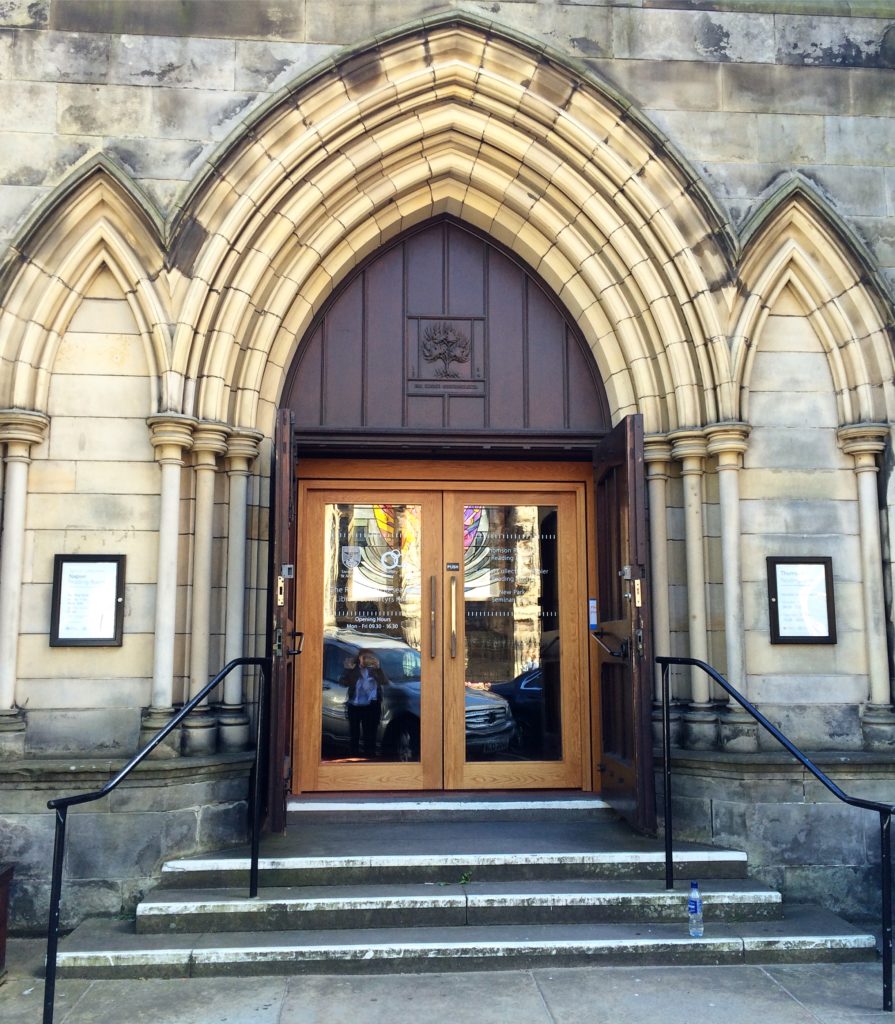
Research, Rare books and Really old maps
Hello again! The past week and a bit has been crazy busy full of all sorts of exciting things so strap yourselves in.
Part 1: Rare and Really old
Wednesday was my 21st birthday. Beth and Carys (the communications team) got me a lightbox which was super lovely of them, (if you saw my previous blog post you know how I feel about lightboxes), and then in the afternoon I was treated to a tour of Special Collections. Special Collections is, aptly named, our collection of special (and really old) rare books, archives and photographs. A lot of this is stored in what’s called the Annexe. The Annexe is up on the North Haugh and even though I have lived here for three years, I didn’t even know this place existed….trust me when I say it is SO COOL.
We were lucky enough to be treated to a tour by Gabriel who is the library’s Assistant Director (Special Collections), and is awesome. She showed us a few gems including a 15th century Quran with gold pages and a tiny hand-painted(!) prayer book of hours.
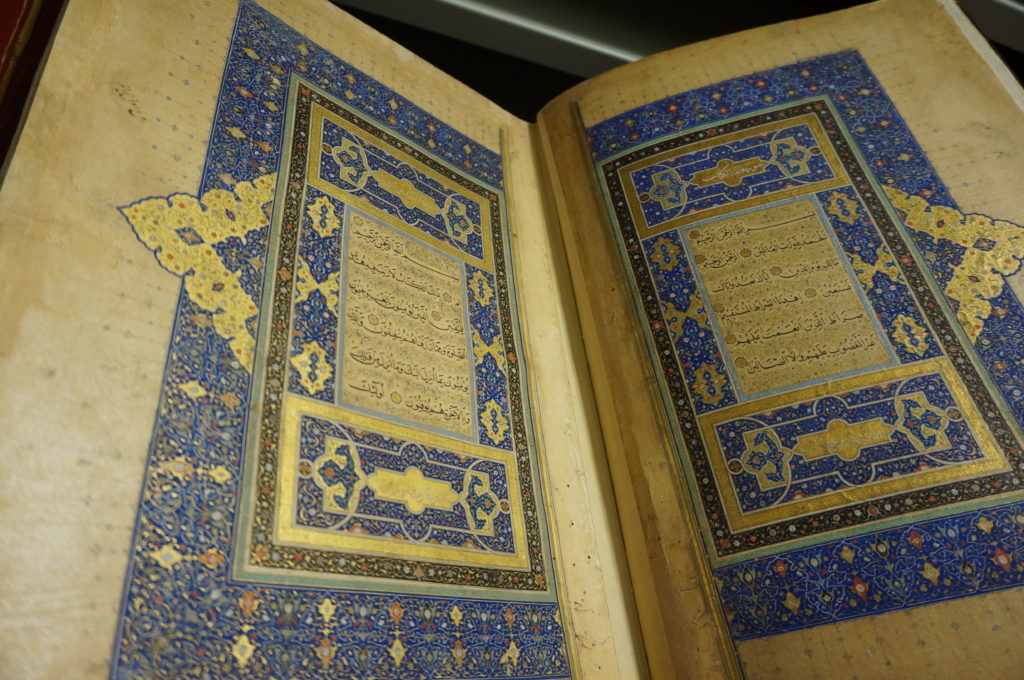
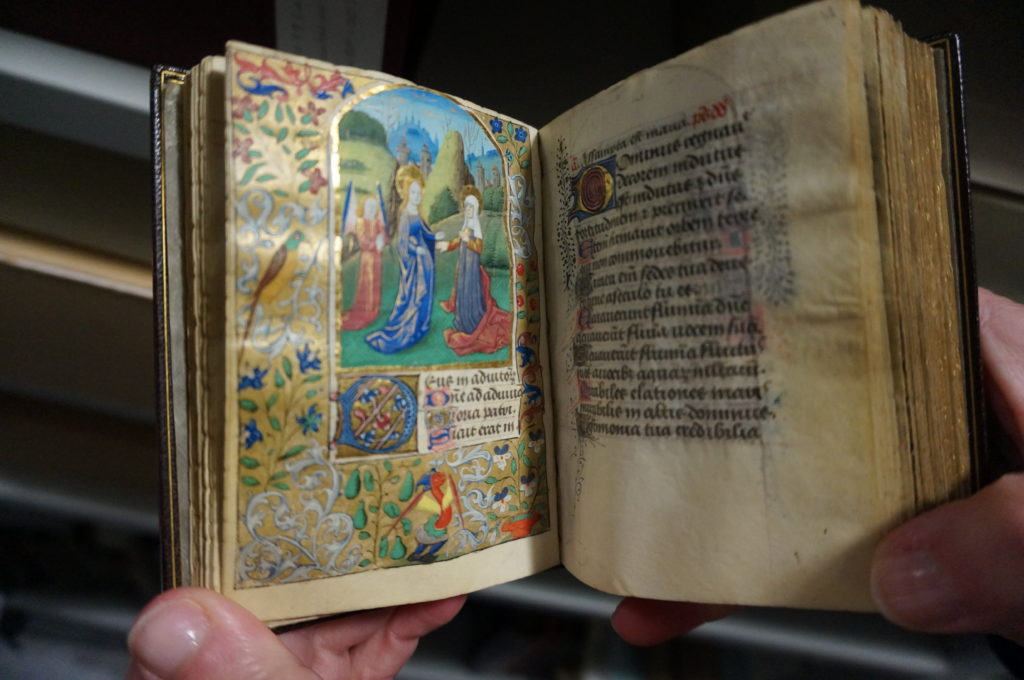
My favourite however, was an atlas by W. J. Blaeu (vol. 4) which included a map of Kent (where I’m from) from 1648. This was special to me for two reasons. 1) I’m a Geography student so liking maps is in my blood, and 2) because this was where I live. My tiny English village and all the areas I know so well, are on a map that was made nearly 400 years ago. It was actually quite emotional to think about all the individual lives that have passed through there… 400 years worth of stories.
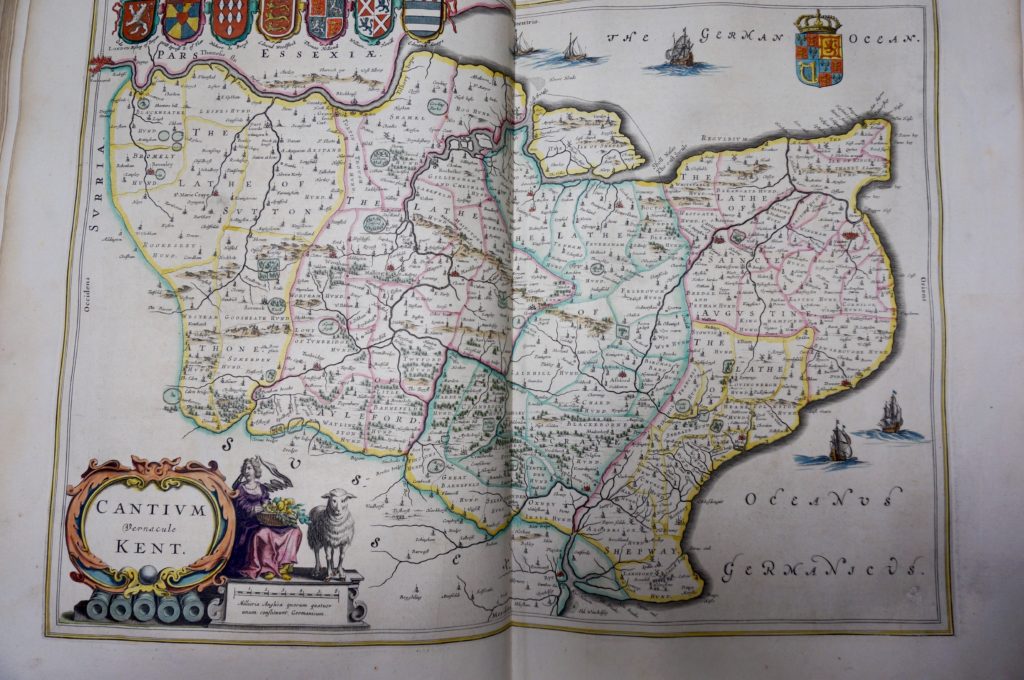
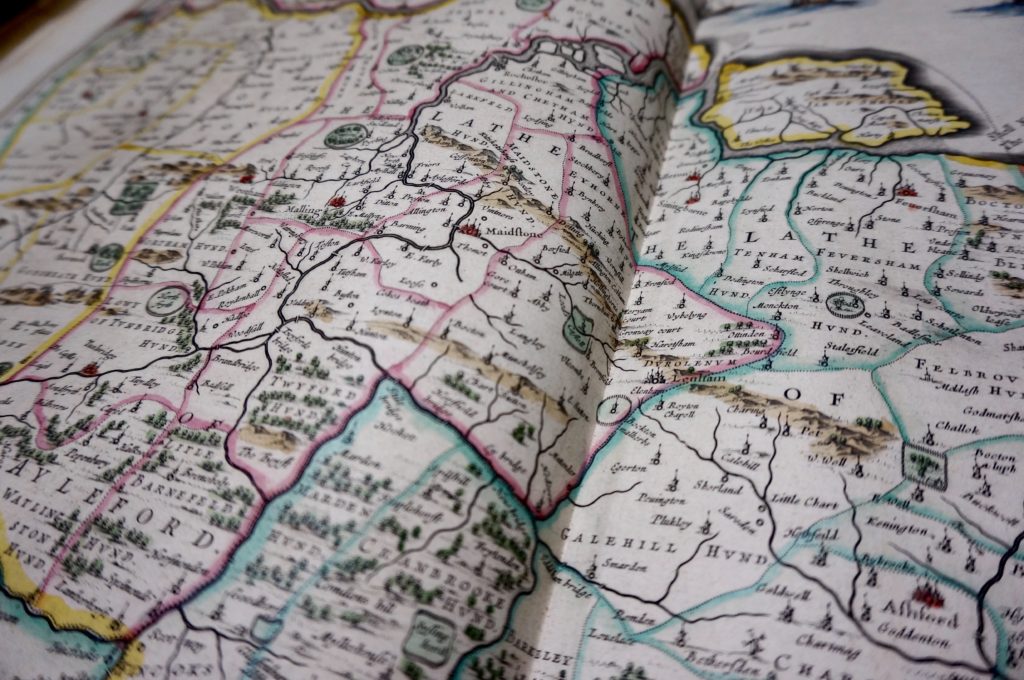
The best bit about all of this is that it’s not just a perk of the job. Anyone can request to look at these archives! You just fill out this handy form and the requested item will be transferred for you to consult in the Napier Reading Room at Martyrs.
Part 2: Research
On top of all this, what is essentially the main part of my internship, carrying out research and collecting data and feedback, happened this week. So I’ve done a lot of talking to people which was really interesting.
It all started two Thursdays ago where we had the challenge of recruiting participants for our study. Obviously the natural course of action was bribery. We set up our little stall outside and in return for writing their library top tip down on a post-it note, they would receive a free brownie. Distracting students with food is a great tactic – works every time. This #libraryadvice will be going up on our Facebook page in Freshers Week so keep an eye out! Whilst the students were doing this, we chatted to them about the focus groups and interviews we were running and asked them to sign up if they were interested. We actually got a fair number!
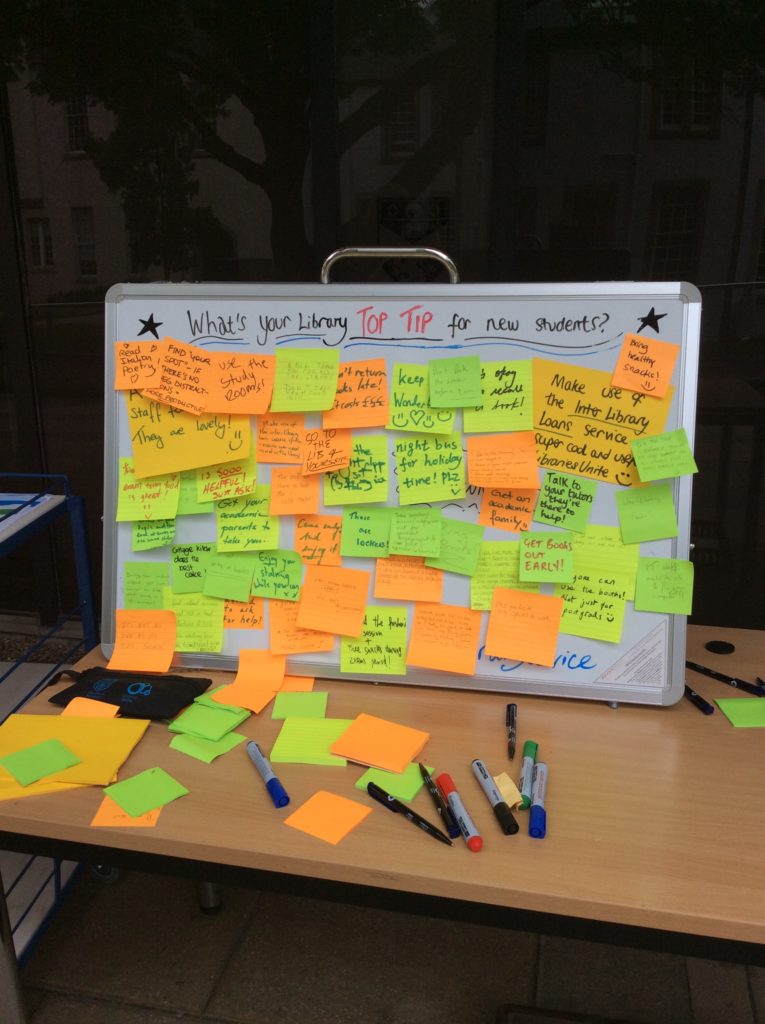
We had three available focus groups running on Tuesday, Wednesday and Thursday last week, each one lasting for around an hour. I’d met with various colleagues the week before to see if there was anything they specifically wanted feedback on and so worked this into the discussions. Ideally, however, you want focus groups to run themselves, only stepping in to keep the conversation on track or ask for clarification. I was lucky that for the most part, this happened. We started off each session with a bit of an ice-breaker activity which is also a qualitative method in it’s own right; cognitive mapping. Basically, this involves asking participants to “draw a map of the places you use most in the library”, but the key is to get them to change pen colour every two minutes. This allows you to see a timeline of what was drawn, when. The hypothesis is that people draw what is most important to them first. For me, that was the café! #priorities
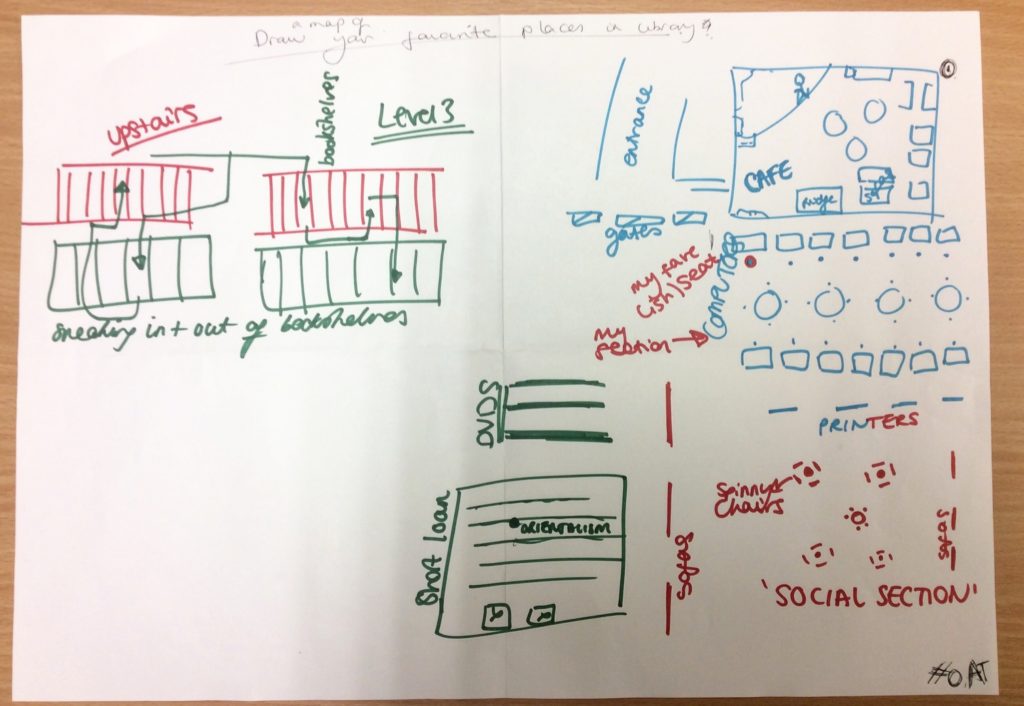
The focus group discussions raised some really important and significant issues, some of which we were aware of and some of which we weren’t. Thank you so much to all the participants who were keen to help and offered their views and suggestions with honesty.
The big job is now 1) transcribing three and half hours worth of chatting, (help me!) 2) consolidating that information in to some understandable format and 3) putting it all into a report with suggestions for improvement. This report will be read by library directors (no pressure) and will hopefully go a long way in making tangible changes and improvements.
On the topic of qualitative research, I also took my stalking skills to the next level by carrying out participant observation, literally people watching. This method allows us to understand how people actually use library spaces on a daily basis. *David Attenborough voice*, “here we see a rare sighting of a student in their natural habitat…”.
So, last Friday I went under cover, (the library is basically a spy mission), and sneaked in to Martyrs Kirk. I took note of things like environmental factors (temperature, noise, light), any rule-breaking (talking or food and drink), what belongings people brought with them as well as how many people were actually there. This transpires into pretending to be working when you’re actually writing things like “pink is typing on laptop, three books, external mouse. Dark green is still wearing jacket.” I called individuals by colours which relate to where they were sitting on the floor plan. The dots are the movements of people entering or leaving and the path they took their seat. This may seem insignificant but it can inform decisions such as furniture and how the space is set out.
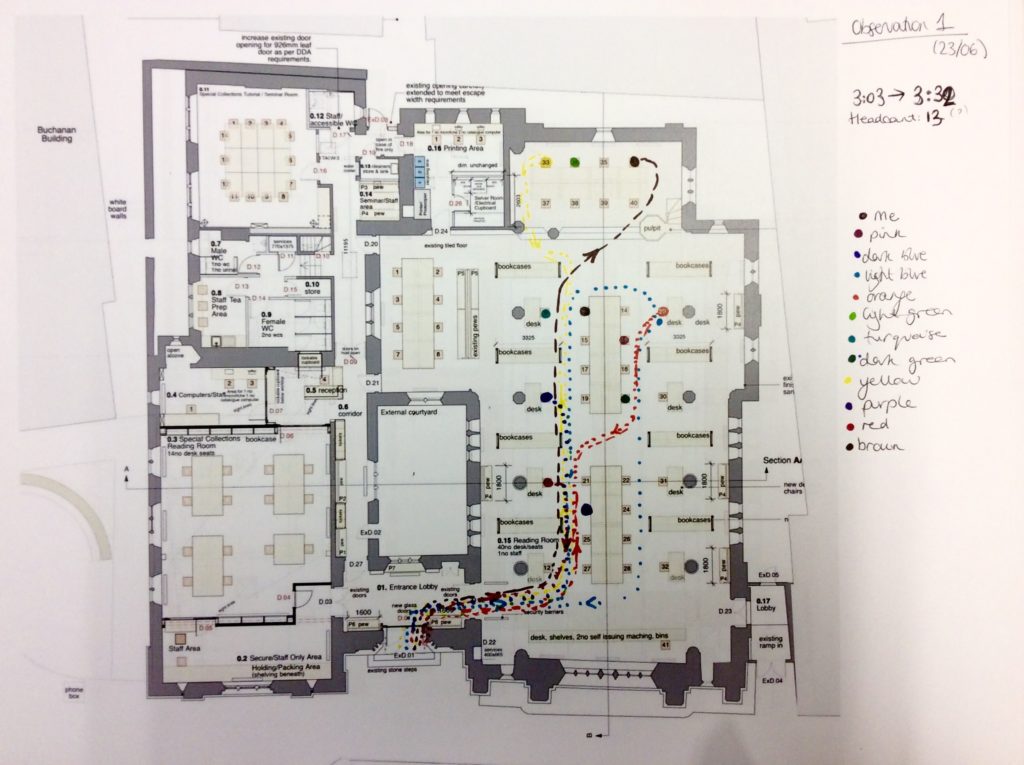
So it’s been a pretty jam-packed week and a bit! I’m realising more and more just how huge of an operation running this library is, let alone this University. This week is my last (*crying face*) and it is being spent largely writing up my findings. Stay tuned to find out what I conclude. I’m also still master of the instagram (#plug) so check that out too. Remember if you ever want to give feedback on how to improve the library you can email [email protected].
Alison Thomas has just finished the third year of her MA Geography and Psychology degree. Follow her internship progress on this blog and see some behind-the-scenes of what she’s up to on our instagram account @standrewsunilib.